College Summer Internship Day in My Life
Are you wondering what a day in the life of a UNH student looks like? Welcome back to our Day in the Life of a UNH Wildcat blog series, where we put the spotlight on students from different academic majors and class years. Today, Rebecca Lahousse ‘26, a chemistry major, walks you through a day in her life interning at Mutual Cornell Environmental, where she analyzes samples for PFAS, lead or cadmium.
Morning

Rhode Island State House
7:20 a.m.
I begin my drive to Mutual Cornell Environmental and head into Providence, Rhode Island. On my drive, I pass the Rhode Island State House.
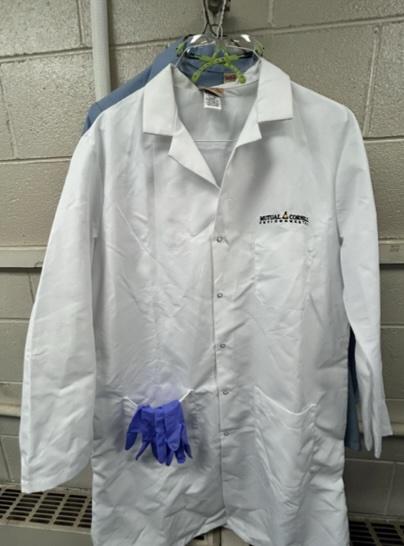
Mutual Cornell Environmental lab coat, goggles and gloves
8 a.m.
I arrive at Mutual Cornell Environmental and begin by putting on proper PPE (personal protective equipment), which includes a lab coat, goggles, and gloves. It is important to ensure proper PPE is always worn, as I deal with dangerous chemicals throughout the day.
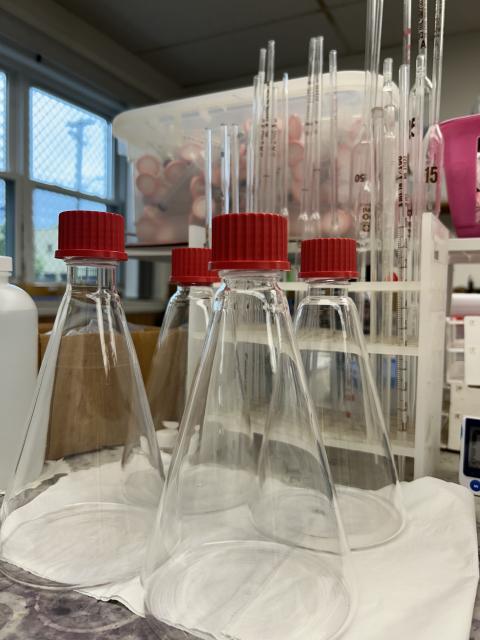
Quartz airtight flasks for PFAS testing
8:10 a.m.
Once proper safety precautions have been taken, I begin to prepare samples for PFAS testing. PFAS is an acronym for perfluoroalkyl substances. These substances can be found in firefighting foam and many everyday items, such as raincoats, takeout containers, shampoo, and much more. Testing for PFAS is important, as the substances have been linked to cancer; however, the full scope of the hazardous health effects is still unknown.
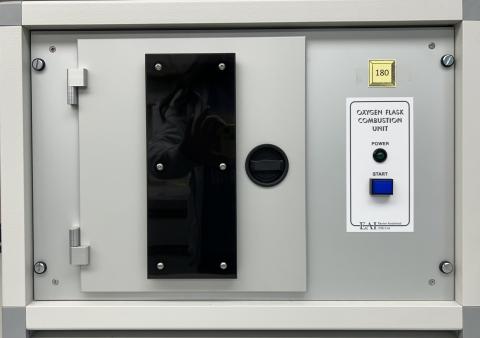
Oxygen combustion unit
8:30 a.m.
After the samples have been prepared, they are run on an oxygen combustion unit. This particular oxygen combustion unit uses focused infrared heat from a tungsten lamp to ignite the sample. This allows the sample potentially containing PFAS to be incinerated, leaving behind a gas. The gas settles into the solution of the airtight quartz flask and can later be tested and analyzed for fluorine content.
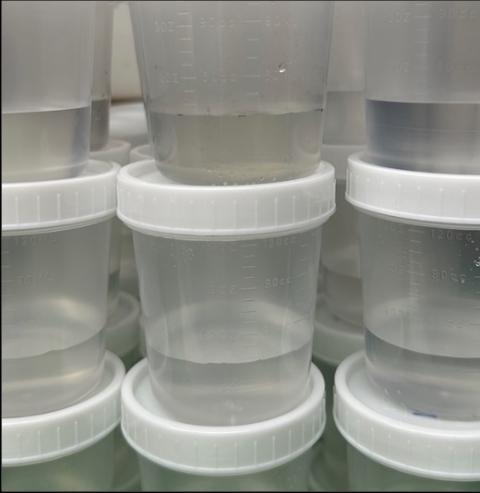
PFAS samples after combustion
9 a.m.
After waiting for the gas to fully settle, it’s transferred to a container (shown above) to be analyzed on a fluorine probe.
Afternoon
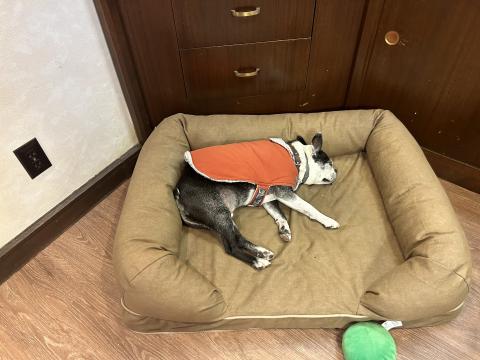
Ziggy, the lab dog, taking a nap after a long day of napping
12 p.m.
It is now lunch time, so I take a break from running samples to go say hi to the lab dog, Ziggy!
1 p.m.
Lunch is now over, so I return to running the PFAS samples or assist on other testing that is being done by my coworkers. At Mutual Cornell Environmental, I’ve had the opportunity to gain hands-on experience with a variety of analytical techniques, including ICP (inductively coupled plasma), GC-MS (gas chromatography-mass spectrometry) and XRF (X-ray fluorescence). The lab conducts a wide range of tests, such as lead, cadmium, and nickel content analysis, as well as phthalate testing and more. My internship here has allowed me to broaden my practical skills and deepen my understanding of instrumental analysis.
Evening

Corliss Street connecting to Admiral Street in Providence, Rhode Island
5 p.m.
Now, it is time to drive home from Providence and rest before I do it all over again tomorrow. I am grateful for the opportunity to intern at Mutual Cornell Environmental for the second time. This experience has allowed me to apply the concepts I’ve learned at UNH in a practical setting, while also strengthening my laboratory skills and techniques.
related posts:
What Is it Like to Do Undergraduate Research at UNH?
Meet Jordan Christian '25, an environmental sciences: geosystems major and learn more about what excited and challenged her while conducting research on magma assembly during continental rifting in the Alps of France as a UNH undergraduate. read more about Jordan's research experience
